 To enhance service speed and avoid tariff delays, we've opened a US warehouse. All US orders ship directly from our US facility.
To enhance service speed and avoid tariff delays, we've opened a US warehouse. All US orders ship directly from our US facility.
| Cat. No. | Product Name | Field of Application | Chemical Structure |
|---|---|---|---|
| DC43857 | VK-II-36 Featured |
VK-II-36, a structural analog of carvedilol, selectively suppresses sarcoplasmic reticulum Ca²⁺ release without exhibiting β-receptor blocking activity. It effectively inhibits both early and delayed afterdepolarizations, thereby preventing triggered arrhythmias. This unique pharmacological profile makes VK-II-36 a promising candidate for antiarrhythmic therapy.
More description
|
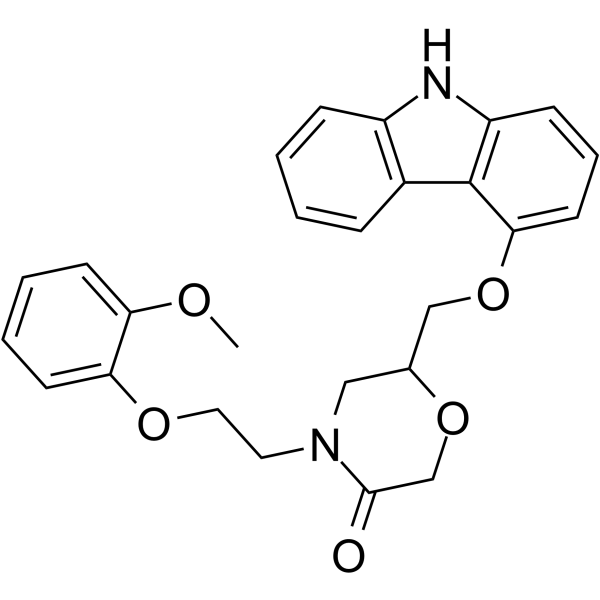
|
| DC42671 | Galloflavin Featured |
Galloflavin is a strong inhibitor of lactate dehydrogenase (LDH), effectively targeting both LDH-A and LDH-B isoforms with calculated inhibitory constants (Ki) of 5.46 μM and 15.06 μM, respectively, for pyruvate. By disrupting LDH activity, galloflavin suppresses glycolysis and reduces ATP generation, leading to the inhibition of cancer cell proliferation. This mechanism highlights its potential as an anticancer agent targeting metabolic pathways.
More description
|
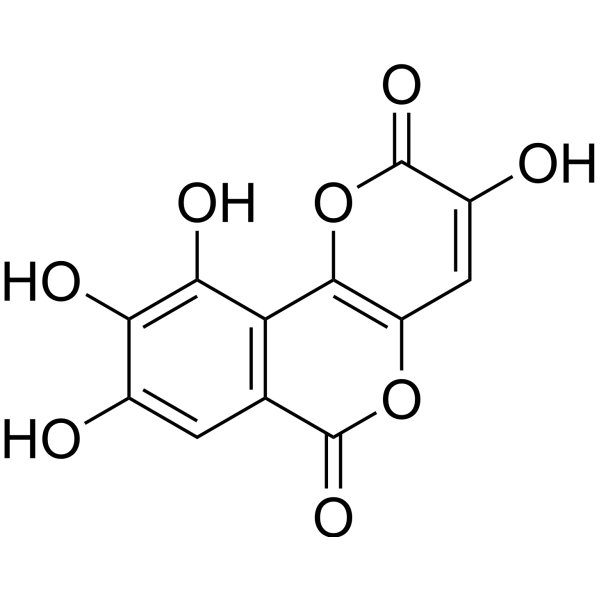
|
| DC22777 | FPH 2(BRD9424) Featured |
A small molecule that promotes differentiation of iPS-derived hepatocytes.
More description
|

|
| DC34603 | Fluxapyroxad Featured |
Fluxapyroxad is a broad-spectrum fungicide which inhibits the succinate dehydrogenase (SQR) enzyme.
More description
|
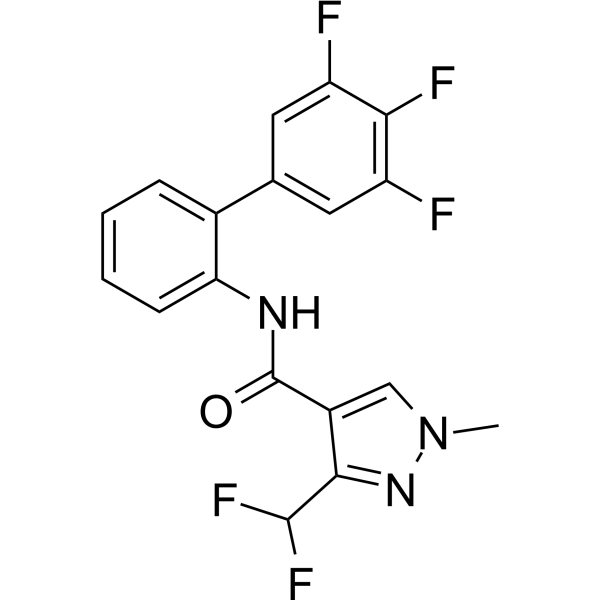
|
| DC43002 | TAE-1 Featured |
TAE-1 is a AChE inhibitor. TAE-1 inhibits acetylcholinesterase (AChE; IC50 = 0.465 µM for the human erythrocyte enzyme).
More description
|

|
| DC23948 | AV-412 |
AV-412, also known as MP-412, is a second-generation, orally bioavailable dual kinase inhibitor with potential antineoplastic activity. EGFR/HER2 inhibitor AV-412 binds to and inhibits the epidermal growth factor receptor (EGFR) and the human epidermal growth factor receptor 2 (HER2), which may result in the inhibition of tumor growth and angiogenesis, and tumor regression in EGFR/HER2-expressing tumors. This agent may be active against EGFR/HER2-expressing tumor cells that are resistant to first-generation kinase inhibitors. EGFR and HER2 are receptor tyrosine kinases that play major roles in tumor cell proliferation and tumor vascularization.
More description
|
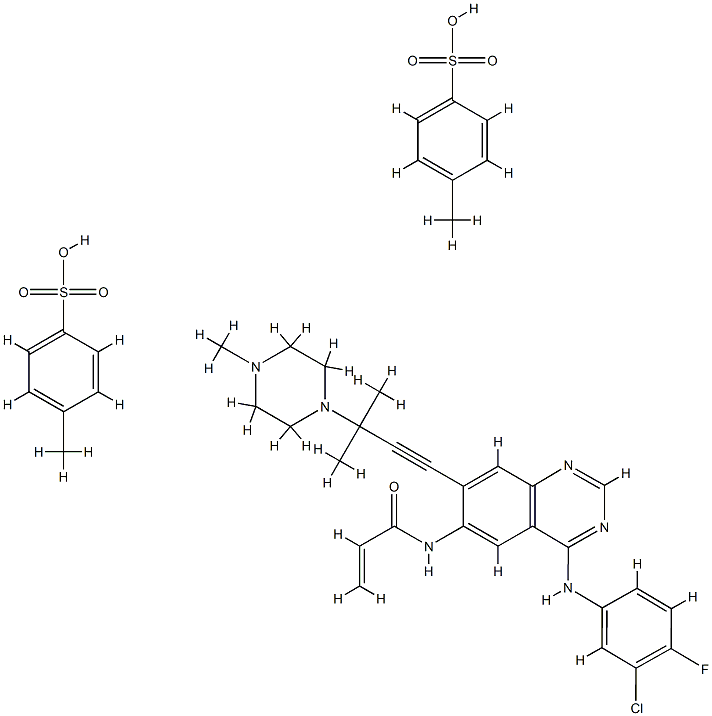
|
| DC75868 | AZ14133346 Featured |
AZ14133346 (compound 36) is a potent and selective inhibitor of EGFR Exon20 insertions, with the IC50 of 85 nM. AZ14133346 plays an important role in cancer research.
More description
|

|
| DC43000 | BRD4884 Featured |
BRD4884 is a novel histone deacetylase (HDAC) inhibitor demonstrating selective class I HDAC inhibition with nanomolar potency.
More description
|
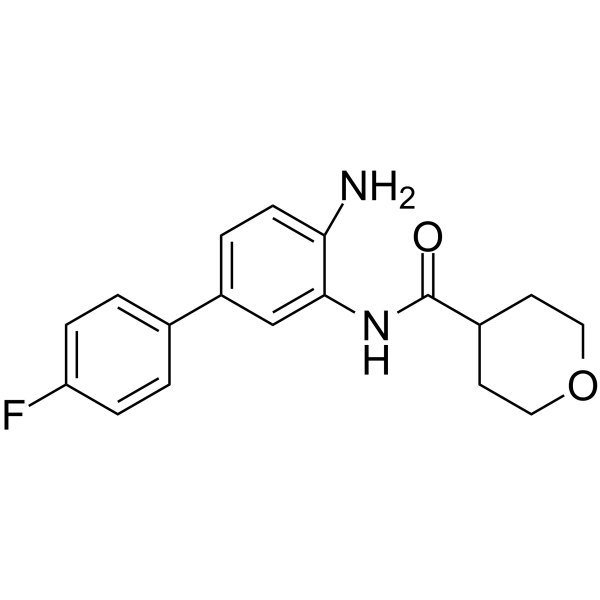
|
| DC42885 | BGC20-1531 hydrochloride Featured |
BGC-20-1531 (PGN 1531) is a novel benzenesulfonamide-based compound that functions as a selective prostaglandin E2 receptor EP4 subtype antagonist.
More description
|
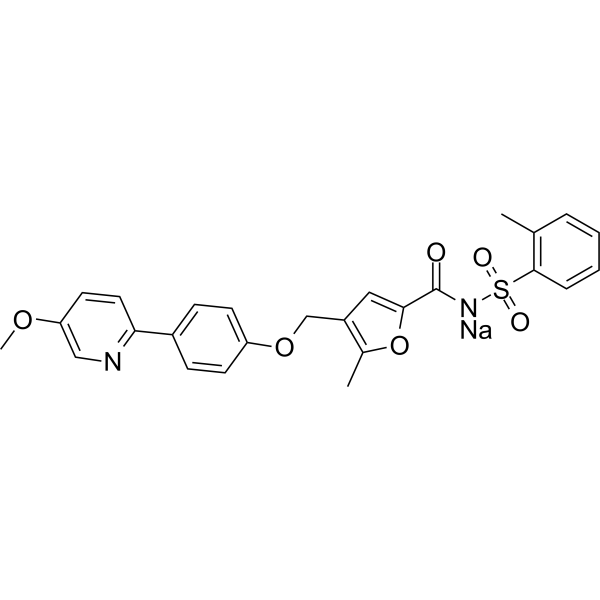
|
| DC21160 | Jarin-1 Featured |
Jarin-1 represents a breakthrough in plant hormone modulation as the pioneering small-molecule inhibitor of jasmonoyl-L-isoleucine synthetase (JAR1).
More description
|
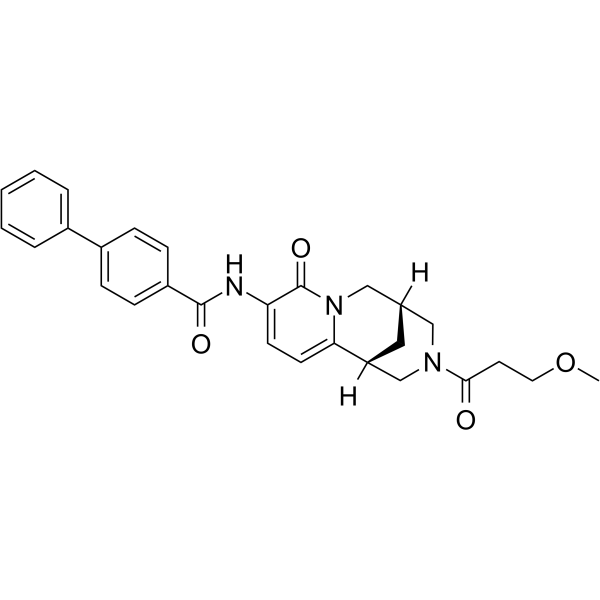
|
| DC32943 | MEK-IN-4 Featured |
MEK-IN-4 is a novel small-molecule inhibitor targeting the MAPK/ERK kinase (MEK) pathway with therapeutic potential across multiple disease areas.
More description
|
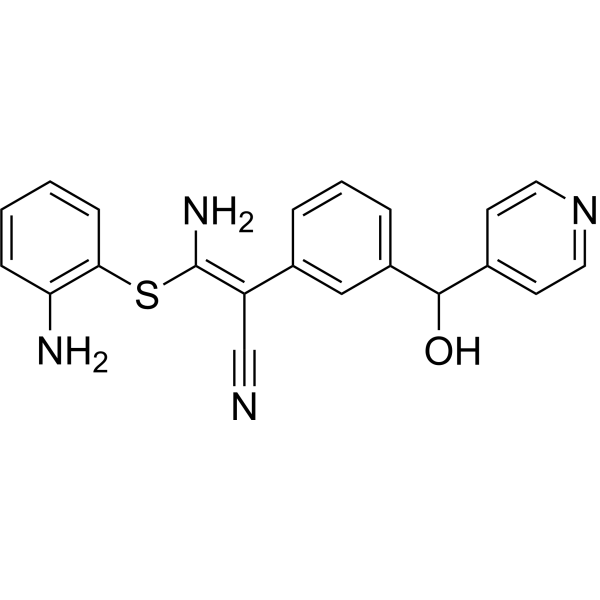
|
| DC20353 | Dafadine A Featured |
Dafadine-A represents a novel class of cytochrome P450 inhibitors with unique species-specific activity.
More description
|
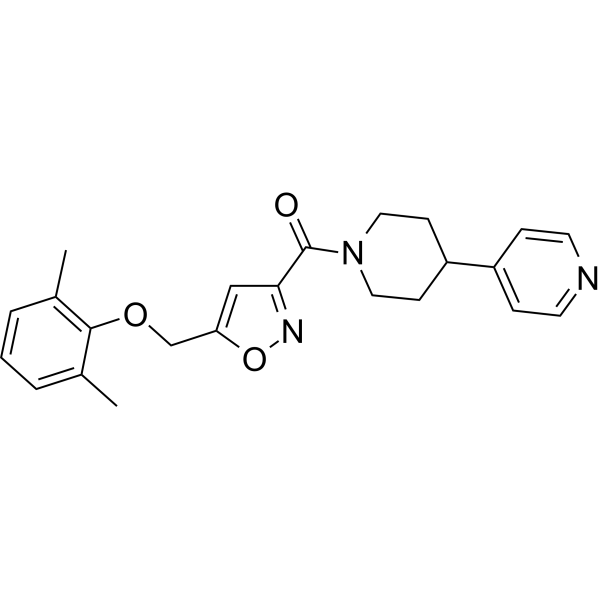
|
| DC75865 | TI17 Featured |
TI17 represents a novel class of targeted anticancer agents that specifically disrupt DNA damage repair mechanisms in malignant cells.
More description
|
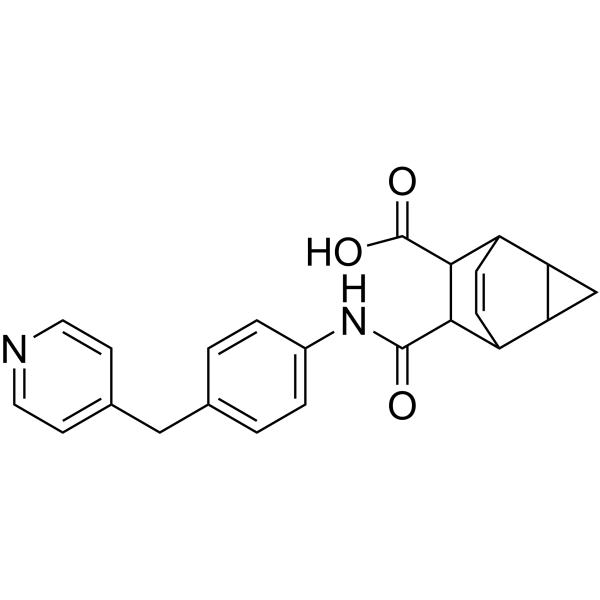
|
| DC32427 | B355252 Featured |
B355252 is a novel neuroprotective compound that demonstrates dual mechanisms of action to support neuronal survival and regeneration.
More description
|
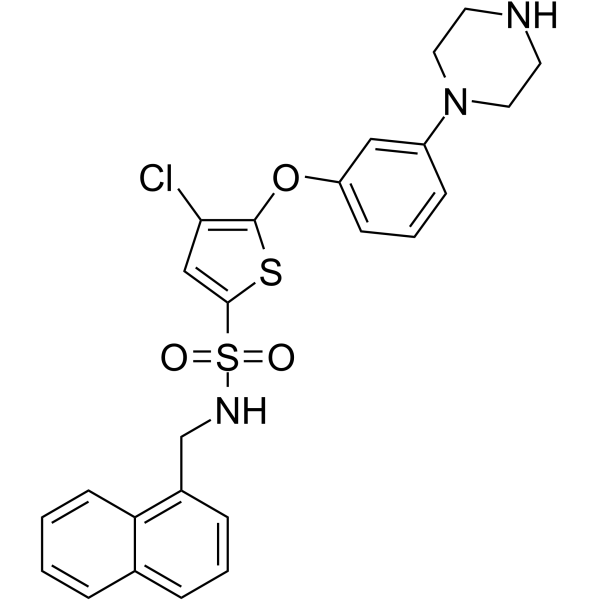
|
| DC23658 | MK-0343 Featured |
MK-0343 (MRK-409) represents a novel class of benzodiazepine-site ligands with unique GABAA receptor subtype selectivity.
More description
|
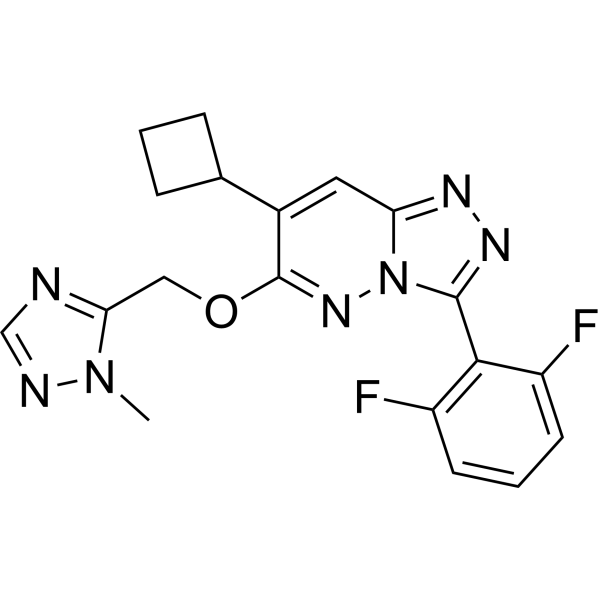
|
| DC43907 | NIAD-4 Featured |
NIAD-4 is an advanced fluorescent probe specifically engineered for high-contrast imaging of amyloid-β (Aβ) aggregates in Alzheimer's disease research.
More description
|
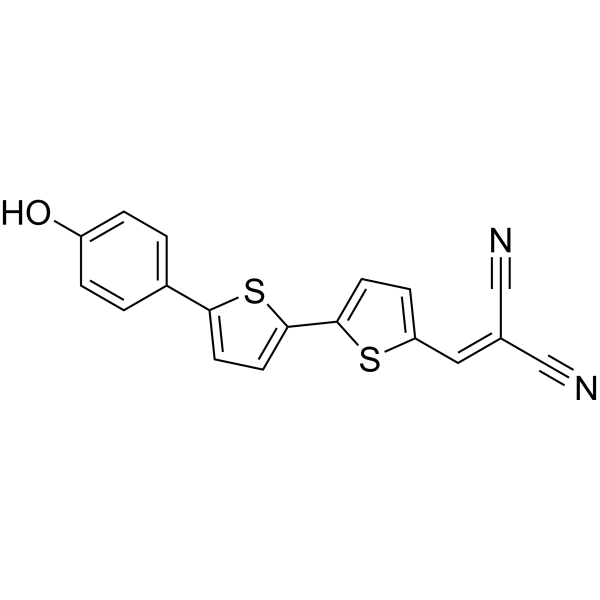
|
| DC22971 | CDE 096 Featured |
CDE-096 is a highly effective plasminogen activator inhibitor-1 (PAI-1) antagonist with broad-spectrum inhibitory activity.
More description
|

|
| DC32988 | 2-Hydroxysaclofen Featured |
2-Hydroxysaclofen is a selective and pharmacologically active antagonist of the GABAB receptor subtype, demonstrating multiple functional effects in neuropharmacological studies.
More description
|
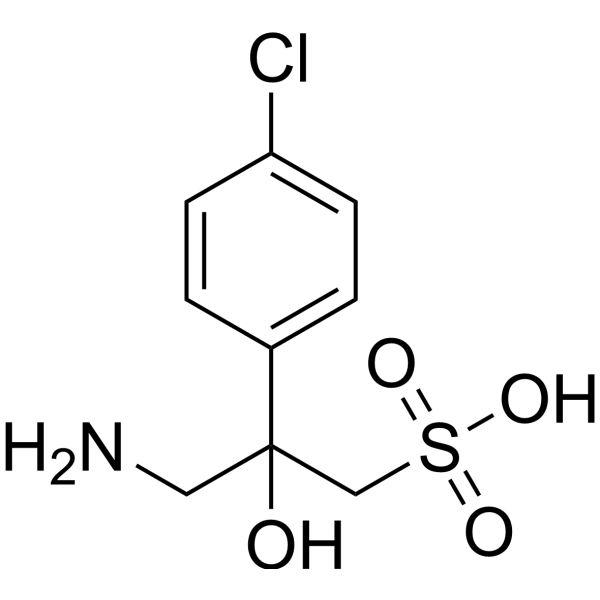
|
| DC22098 | GB1107 Featured |
GB1107 is a novel small-molecule inhibitor specifically designed to target galectin-3 (Gal-3), demonstrating high binding affinity and oral bioavailability.
More description
|

|
| DC21582 | RO 5263397 Featured |
RO5263397 is a novel, orally active trace amine-associated receptor 1 (TAAR1) agonist demonstrating high potency and species-specific activity.
More description
|
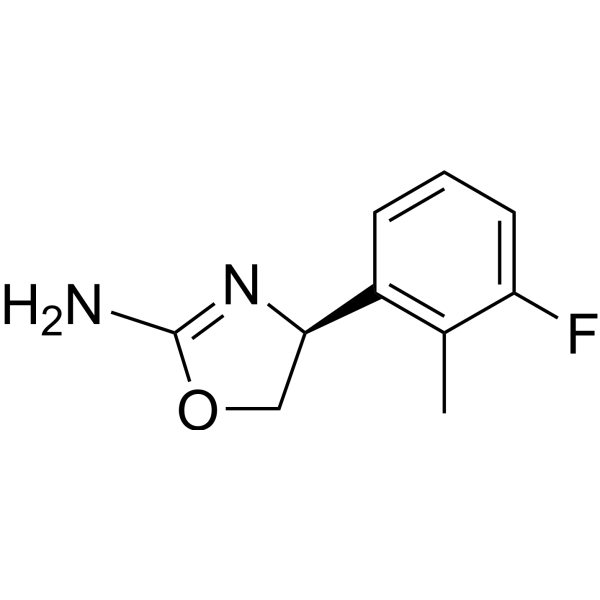
|
| DC23234 | Atorvastatin Featured |
A competitive inhibitor of HMG-CoA reductase that acts as a lipid-lowering agent for prevention of events associated with cardiovascular disease..
More description
|
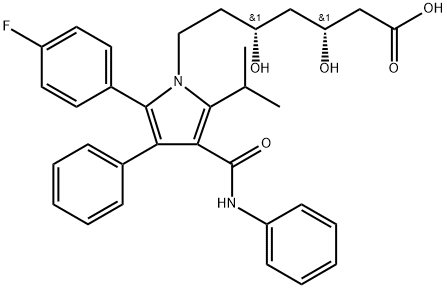
|
| DC42611 | Subquinocin Featured |
Novel inhibitor of CYLD and USP-family deubiquitinating enzymes, increasing the polyubiquitination of NEMO and RIP1, enhancing NF-κB activation and promoting NF-κB signaling
More description
|

|
| DCC5270 | Tunicamycin Featured |
Antibiotic, inhibiting the first step in the N-linked glycosylation in eukaryotes and inducing ER stress to activate the unfolded protein response (UPR)
More description
|
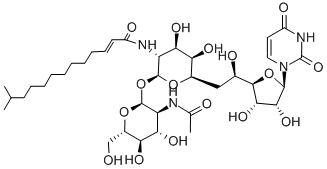
|
| DC8125 | ETH 4030(Magnesium ionophore III) Featured |
Magnesium ionophore III is an onophore used in solvent polymeric membrane electrodes for the assay of Mg2+ activities in blood serum in vitro.
More description
|

|
| DC22114 | ICA135 Featured |
ICA135 (ICA-135, ICA 135) is a broad-spectrum inhibitor against human enteroviruses that inhibits Coxsackievirus A10 (CV-A10) replication in RD cells with IC50 of 1.446 uM.
More description
|
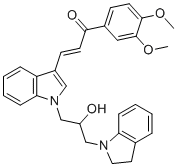
|
| DC74230 | ZHAWOC8697 Featured |
ZHAWOC8697 is a small molecule dual inhibitor of sentrin-specific protease SENP1 and SENP2 with IC50 of 8.6 and 2.3 uM, respectively, a valuable tool for the study of SUMOylation processes.
More description
|
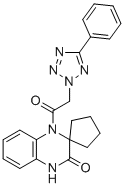
|
| DC40358 | MK-6240 Precursor Featured |
MK-6240 Precursor (6e) serves as a key intermediate in the synthesis of **[18F]-MK-6240**, a highly selective tau-targeting PET imaging agent. The radiolabeled compound, **[18F]-MK-6240**, is specifically designed for detecting neurofibrillary tangles (NFTs)—a hallmark pathology of Alzheimer’s disease and other tauopathies.
More description
|

|
| DC74646 | EB-PSMA-617 Featured |
EB-PSMA-617 is an Evans blue-modified prostate-specific membrane antigen (PSMA) 617 ligand for making 177Lu-EB-PSMA, which is potential useful for Metastatic Castration-Resistant Prostate Cancer.
More description
|
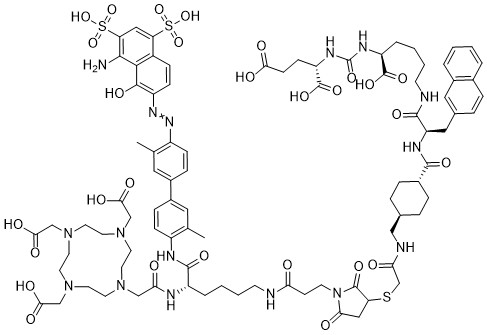
|
| DC74641 | HC-258 Featured |
HC-258 is a Covalent Acrylamide TEAD Inhibitor That Reduces Gene Expression and Cell Migration. HC-258 reduces the CTGF, CYR61, AXL, and NF2 transcript levels and inhibits the migration of MDA-MB-231 breast cancer cells. Co-crystallization with hTEAD2 confirmed that HC-258 binds within TEAD’s PA pocket, where it forms a covalent bond with its cysteine.
More description
|

|
| DC74639 | Oligopeptide-10 Featured |
Oligopeptide-10, also known as granactive oligopeptide-10, is a synthetic bio-active peptide composed of 15 amino acids. it can help manage acne-causing bacteria, both on its own and in conjunction with anti-acne superstar exfoliant salicylic acid.
More description
|

|